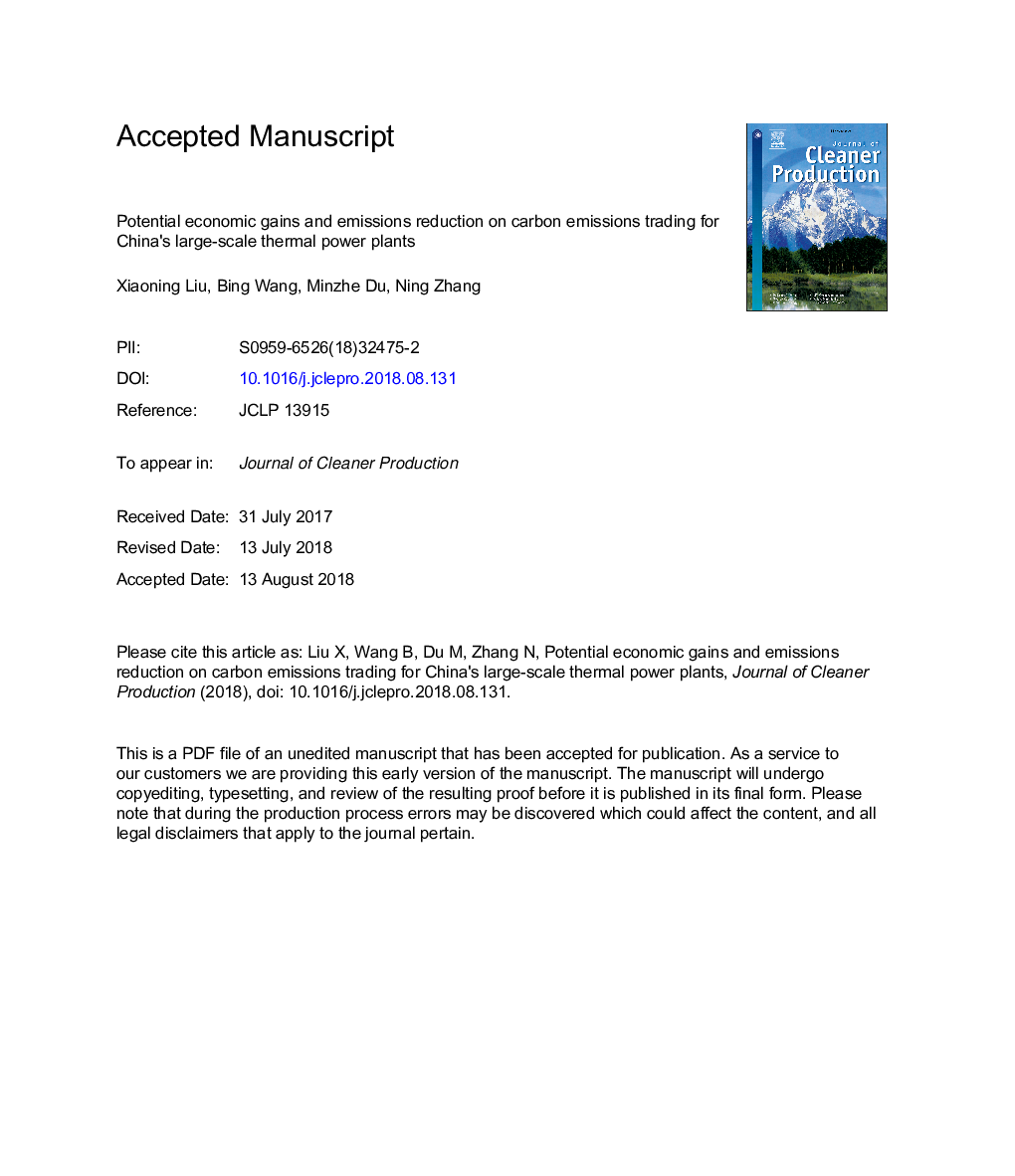| Article ID | Journal | Published Year | Pages | File Type |
|---|---|---|---|---|
| 10149168 | Journal of Cleaner Production | 2018 | 28 Pages |
Abstract
Carbon emissions trading is one of the important economic means to solve the environmental externality. Based on the data of CO2 emissions from the thermal power plants over the period from 2005 to 2010 in China, this paper uses no-parametric optimization models to estimate the potential economic gains and potential carbon emissions reduction under three allocation strategies of carbon emissions trading allowance. Results show that the maximum potential gains can be obtained by the spatial allocation scenario for the combination of CO2-SO2 emissions trading, and the output growth ratio among power plants varies huge. The establishment of jointed CO2-SO2 emissions trading is usually highly beneficial to achieve the three targets, including the optimal allocation of resources, the increase of potential gains and the reduction of pollutant emissions.
Related Topics
Physical Sciences and Engineering
Energy
Renewable Energy, Sustainability and the Environment
Authors
Xiaoning Liu, Bing Wang, Minzhe Du, Ning Zhang,
